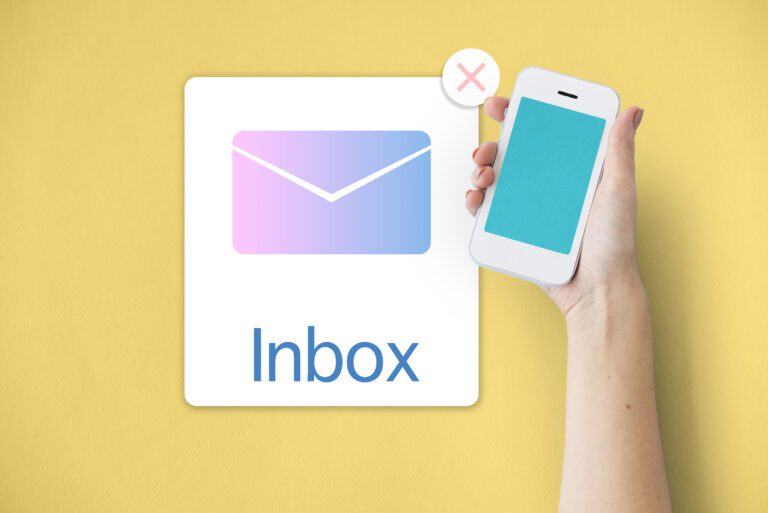23 Email Marketing Statistics To Highly Increase Your Conversions

I hope you enjoy this blog post. If you want Hello Bar to grow your leads, click here.
Author:
Ryan Bettencourt
Published
July 29, 2024

Email marketing statistics are available all over the internet, so we thought we’d compile a handy resource here for anyone who wants to learn how to increase their conversions using email.
Knowing this data can help you make more informed decisions about your email marketing campaigns.
Let’s get started.
Email Marketing Curious Facts
Did you know that the first email was sent way back in 1971? Ray Tomlinson sent a nonsense email to himself just to see if it worked.
That means, as of 2024, email has been around for an impressive 53 years! You might not have gotten your own address until much later, but email has a long and illustrious history.
Why not take advantage of it?
In 2023, about 45.6% of all emails sent globally were considered spam. You wouldn’t want your emails to fall into that category. Don’t worry. You can use email marketing statistics as a guide to create a valuable and effective campaign that results in subscriber satisfaction.
Important Email Marketing Stats Metrics
Before we delve into some of the most noteworthy email marketing statistics, we want to talk about metrics. Although statistics can help you design your email campaigns, you need to collect your own data, analyze it, and use it to improve lead capture and overall ROI.
CTR (Click Through Rate)
CTR refers to the percentage of your email subscribers who click on a call-to-action (CTA) within your emails. Click through rates are notoriously low across industries, but you can improve yours by creating better value through email marketing.
Email Open Rate
Your open rate is the percentage of subscribers who actually open your emails. As we’ve said before, people get tons of email, and they consider half of it spam. If your email subject lines don’t entice your audience, they’ll delete your emails without reading them.
Email Conversion Rate
Your email conversion rate describes the percentage of visitors who take a definitive action based on your email. They may use your coupon code, buy a product that you’ve discounted, or spend money on your website.
ROI (Return on Investment)
Email has an excellent ROI for most marketers. It’s extremely inexpensive, so even if you only generate a few dollars, you can turn your email marketing campaign into a huge windfall for your company.
What is Email Marketing ROI?
You can calculate your ROI by subtracting the amount of money you spend on email marketing from the total revenue generated.
Let’s say, you spend $99 per month on email marketing. Over 30 days, you generate $2,000 in sales from your emails.
That means your email marketing ROI is $1,901. Pretty impressive.
What is Considered a Good Email Marketing Conversion Rate?
We know that email marketing is effective.
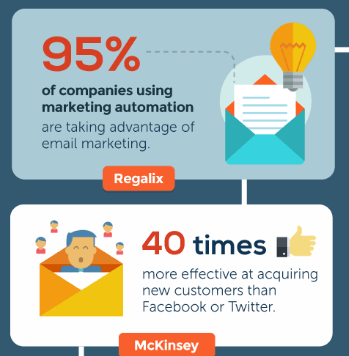
Today’s email marketing statistics don’t lie. You can use this medium to attract more leads and convert them into customers.
This doesn’t mean that the numbers are impressive, though.
In fact, latest studies reveal that the average email campaign results across industries are as follows:
- Average Open Rate: 37.72%
- Average Click Through Rate: 2%
This means that a little more than a third of your subscribers will open your emails and less than 5% will click.
Depressing, right?
However, that doesn’t mean that email marketing isn’t effective. Quite the opposite, in fact, which is what we’re going to show you through our compiled email marketing statistics.
How to Grow Your Email List Using Hello Bar
Before you can start collecting your own email marketing statistics, you need subscribers. And before that, you need a reliable way to collect leads.
That’s where Hello Bar comes in.
Create a top bar for your website that allows people to sign up for your email list. Include an enticing lead magnet to get them to click.
In the following example, the CTA is accompanied by an effective lead magnet.

You can also create other types of bars, such as sliders and exit popups, to increase your signup rates.
7 Awesome B2B Email Marketing Stats
As a B2B business owner, email marketing is one of the most important tools you can leverage to generate more leads and sales.
Let’s take at look at eight of the latest B2B email marketing statistics:
1. 31% of B2B Marketers Consider Email Marketing as Their Most Impactful Channel
Today’s B2B marketers use a multi-market strategy to engage with customers, enhance customer experience, and build loyalty.
Act-On and Ascend 2 conducted a recent study on the B2B perspective on multichannel marketing. They found that email marketing is a strong contender in the B2B marketing industry.
Out of the 98 B2B marketers surveyed, about a third of them cited email marketing as their most impactful marketing channel. Even common channels like influencer marketing and print advertising were considered less impactful.
2. The Average Open Rate for B2B Emails Is 21.5%
The success of a marketer’s efforts highly depends on whether their emails will be opened or not. Generally, about one in five recipients open the emails sent by businesses.
Open rates are crucial because they’re the first level of engagement. B2B businesses can improve their open rates by writing catchy subject lines and ensuring that the emails are relevant to their audiences’ needs and interests.
3. Tuesday Is the Best Day of the Week to Send B2B Emails
The right timing can potentially improve the success of any email marketing campaign. Ensuring that your emails are timely helps increase open and click-through rates.
For B2B marketers, the best day of the week to send emails is Tuesday, precisely at 9 a.m. to 12 p.m. EST and 12:01 p.m. to 3 p.m. EST. On the other hand, you’ll want to avoid Saturdays and Sundays as these are the least effective days.
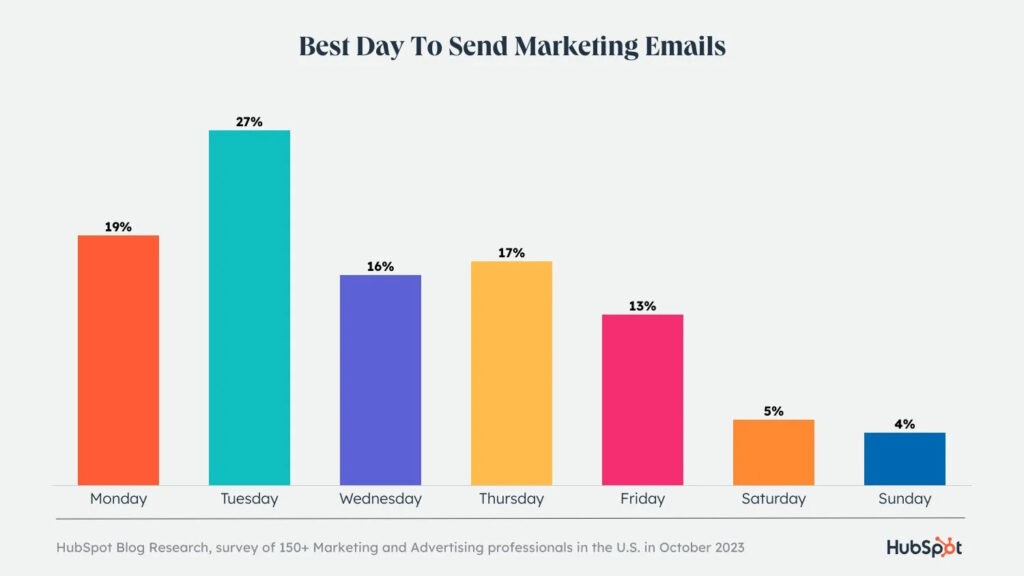
Image via HubSpot
4. 77% of B2B Buyers Prefer to Be Contacted by Email
It’s not difficult to see why email is a top communication medium, preferred by more than three-quarters of B2B buyers.
Even with their tight schedules and multiple priorities, emails allow buyers to manage their time effectively by responding at their convenience.
Emails are also easily accessible from any device and location. This makes it easier for buyers to stay connected and informed, regardless of where they are.
5. About 31% of B2B Marketers Acknowledge Email Newsletters as their Most Effective Lead Nurturing Tool
If you’re not leveraging email marketing to nurture your leads, you might be missing out.
In a recent B2B content marketing report, the results indicated that 3 out of 10 marketers agree that email newsletters are highly effective in nurturing leads.
These newsletters enable marketers to provide valuable content, updates, and personalized messages directly to leads. This regular communication can help build trust, keep the brand top-of-mind, and move leads through the sales funnel.
6. Approximately 75% of B2B enterprises Utilize Email Marketing Software for Their Content Marketing Strategies
Ever wondered how most B2B companies keep their marketing game so sharp? Well, here’s the secret: 75% of them use email marketing software to supercharge their email marketing efforts.
With the right software, you can quickly and efficiently create automated emails and track open, click-through, and conversion rates in real time. You might want to consider leveraging one if you haven’t yet.
7. About 32% of B2B Buyers Place Their Orders via Email
It’s not just B2B businesses that appreciate the convenience of emails. Their buyers do, too.
According to a survey conducted by Statista, 32% of B2B buyers prefer to send their orders through email. Only 29% listed sales representatives as their preferred channel of purchase.
16 Noteworthy General and B2C Email Marketing Statistics
Similarly, email marketing works wonders for B2C businesses. Leveraging it effectively can help turn your leads to customers, improve customer loyalty, increase engagement, and more.
Let’s now take a look at the latest general and B2C email marketing statistics to gain some industry insight.
1. There Are Over 4 Billion Active Email Users Worldwide
If you’re still wondering if email marketing is a great marketing channel, this statistic might just be the confirmation you need. One of the greatest benefits of using email to connect with your customers is that nearly everyone uses it.
According to Statista, the number of email users worldwide in 2022 was 4.26 billion. This figure is projected to reach about 4.73 billion by 2026.
2. Segmenting Your Email Marketing Campaigns Can Result in a Revenue Increase of Up to 760%
Email segmentation allows you to provide a better and personalized customer experience. This ultimately results in higher engagement and customer loyalty.
3. Adding Videos to Your Emails Can Increase Click-Through Rates By 65%
Videos are becoming increasingly popular. Adding them to your personalized email marketing campaigns can greatly impact their success. Videos are a great medium for capturing your audience’s attention, particularly with today’s shorter attention spans.
4. Welcome Emails Generate 320% More Revenue Per Email Than Promotional Emails
Welcome emails are not only good for introducing what your brand is all about. They’re also effective at generating revenue.
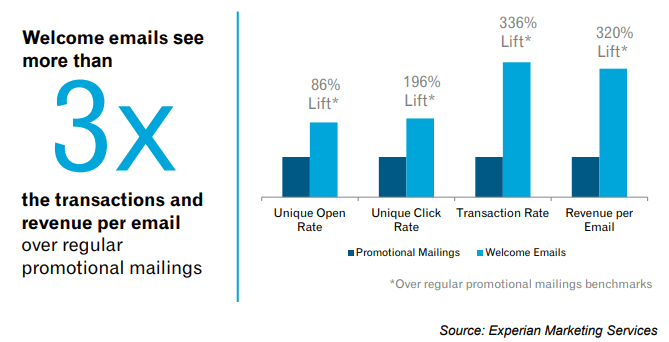
5. 52% of Customers Have Made a Purchase After Receiving a Marketing Message by Email
If you’re still wondering whether to send marketing emails to your prospects, this stat might just help you make up your mind. Not only will your subscribers open and read your emails, 6 out of 10 will complete a purchase, according to email marketing statistics.
6. 77.5% of Business Owners Use AI to Personalize Their Marketing Emails
We can’t overlook the power of artificial intelligence in email marketing. This technology plays a vital role in optimizing and automating the email marketing process.
It’s no wonder AI adoption in email marketing has been on the rise, with almost 8 in 10 marketers using it to plan, execute, and analyze their campaigns.
7. The Use of AI Has Increased Revenue By 41% and CTR By 13.44%
Try using AI in your email marketing strategy to see what works for your business and where you may see higher engagement. Marketers are adopting AI at an increasing rate — and we can see why.
8. Automated Emails Account For 31% of All Email Orders
Marketers are slowly embracing email automation, and we have the results to prove it. Omnisend recently conducted a survey on the 17 billion emails sent through the platform.
It was discovered that about 3 out of 10 email orders originated from automated emails. A third of those who opened these emails even went ahead to make a purchase.
9. Automated Triggered Emails Boast an Impressive Open Rate Of 37.72%
Customers are more likely to respond and engage more often with your brand if they receive triggered email campaigns based on their behavior. This explains the high open rate for triggered emails.
10. 52% Of Consumers Would Rather Go Somewhere Else to Find What They’re Searching for If an Email Is Not Personalized
This simply shows the power of email personalization. To stay competitive and engage effectively with your audience, sending personalized emails is a must.
11. The Average Abandoned Cart Email Open Rate Is 50.5%
Furthermore, in 21% of these emails, the audience clicked the link, and half of those who clicked completed a purchase.
12. 361.6 Billion Emails Are Sent per Day
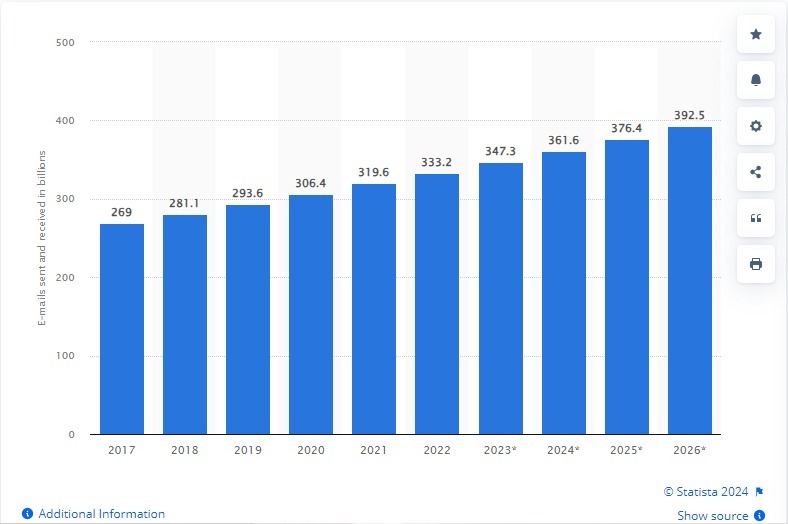
Image via Statista
The number of emails sent every day has continuously increased every year since 2017. We currently have an estimate of 361.6 billion emails sent and received daily across the globe. This number is expected to rise to almost 400 billion by 2026.
Clearly, there’s stiff competition out there. Don’t forget to make your email marketing campaign stand out, whether this is through efficient email copyrighting or value-rich content.
13. Email Marketing Has a Higher Click-Through Rate Than Social Media
When it comes to digital advertising, email marketing has emerged as an effective channel. The average email click-through rate is 2.3 %. Meanwhile, a social media platform like Facebook has a click-through rate of 1.51 %.
This simply means that you’re more likely to convert your audience via promotional offers if you reach out to them via email than if you post on your social media platforms.
14. 47% of Recipients Will Open Their Emails Based on Subject Lines Alone
The value of your emails’ subject lines cannot be understated. They’ll determine whether your recipients will open your emails or ignore them. Write catchy subject lines to instantly grab their attention.
15. About 55% of Emails are Opened and Read on Mobile Devices
If you’re not optimizing your emails for mobile, you’re most likely losing customers. Mobile devices like smartphones and tablets have made it incredibly easy for users to check their inboxes even when on the move.
This trend will likely continue as time goes by. That said, 67% of Gen Z say that they mainly use email on their smartphones.
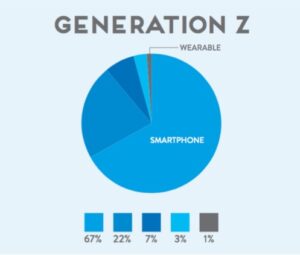
Image via Bluecore
16. 69% Of Users Opt out of Email Subscriptions Because They Receive Too Many Emails
According to a recent study by Constant Contact, approximately 7 out of 10 subscribers will unsubscribe from email lists if they receive an excessive number of emails.
It’s important to keep this statistic in mind as you send your marketing emails. While you might be increasing your email frequency in the hopes of driving more sales, you could end up damaging your results instead.
FAQ
Q1: What is email marketing?
In simple terms, email marketing is a digital marketing strategy that involves sending emails to a targeted audience. These emails are sent with the aim of promoting products or services, building relationships, and driving sales.
Email marketing encompasses various types of emails, each serving different purposes. These include:
- Promotional emails
- Welcome emails
- Automated emails
- Newsletters
Q2: What are the benefits of email marketing for small businesses?
Email marketing offers multiple benefits for small businesses, helping them grow and maintain relationships with customers efficiently.
Here are three top advantages of using email marketing for your small business:
- Cost-effective: Generally, email marketing is a relatively inexpensive marketing channel compared to traditional channels like TV, print, or direct mail. Some email marketing platforms like Omnisend and Mailchimp even offer a free plan with essential features for starting email marketing campaigns without huge upfront costs.
- High ROI: Email marketing campaigns can reach a huge number of recipients at once, maximizing the potential ROI from a single campaign.
- Minimal production costs: Unlike traditional marketing methods, email marketing doesn’t require printing, postage, or physical materials. This generally reduces overall expenses.
Q3: What are the common mistakes to avoid in email marketing?
While email marketing can be highly effective, there are certain mistakes that can undermine its success.
Here are the common pitfalls to avoid:
- Not segmenting your audience
- Ignoring personalization
- Overloading emails with excessive information
- Neglecting mobile optimization
- Failing to test your email marketing campaigns
- Having an inconsistent sending schedule
- Using misleading subject lines
- Overselling
Q4: How often should I send marketing emails?
The frequency of your marketing emails depends on several factors, including your audience, the nature of your business, and type of content.
Generally, we recommend staying on top of your customer’s mind without overwhelming them. Once a week is a great starting point, as this frequency can help you maintain regular contact with your audience without overwhelming them.
Q5: What are some best practices for improving email engagement?
Improving email engagement involves several best practices that capture and maintain your audience’s interest.
Here are five practices to consider:
- Personalize your email content to make your emails feel more engaging and personal
- Segment your prospects by age, gender, location, and other demographic factors
- Create high-quality content that’s relevant and valuable to your subscribers
- Optimize your emails for mobile to ensure they look great on all screens and devices
- Write clear CTAs that stand out and encourage action
Conclusion
It’s clear from the email marketing statistics we’ve highlighted that this is a powerful way to reach your audience effectively. Don’t miss out on this opportunity.
Tools like Hello Bar can help you capture email addresses from website visitors and maximize your existing traffic.
However, remember that the real magic happens with your email content. Engage, entertain, inspire, and educate your audience to boost interaction and drive results. Master these elements, and you’ll turn email marketing into a major growth driver for your business.



